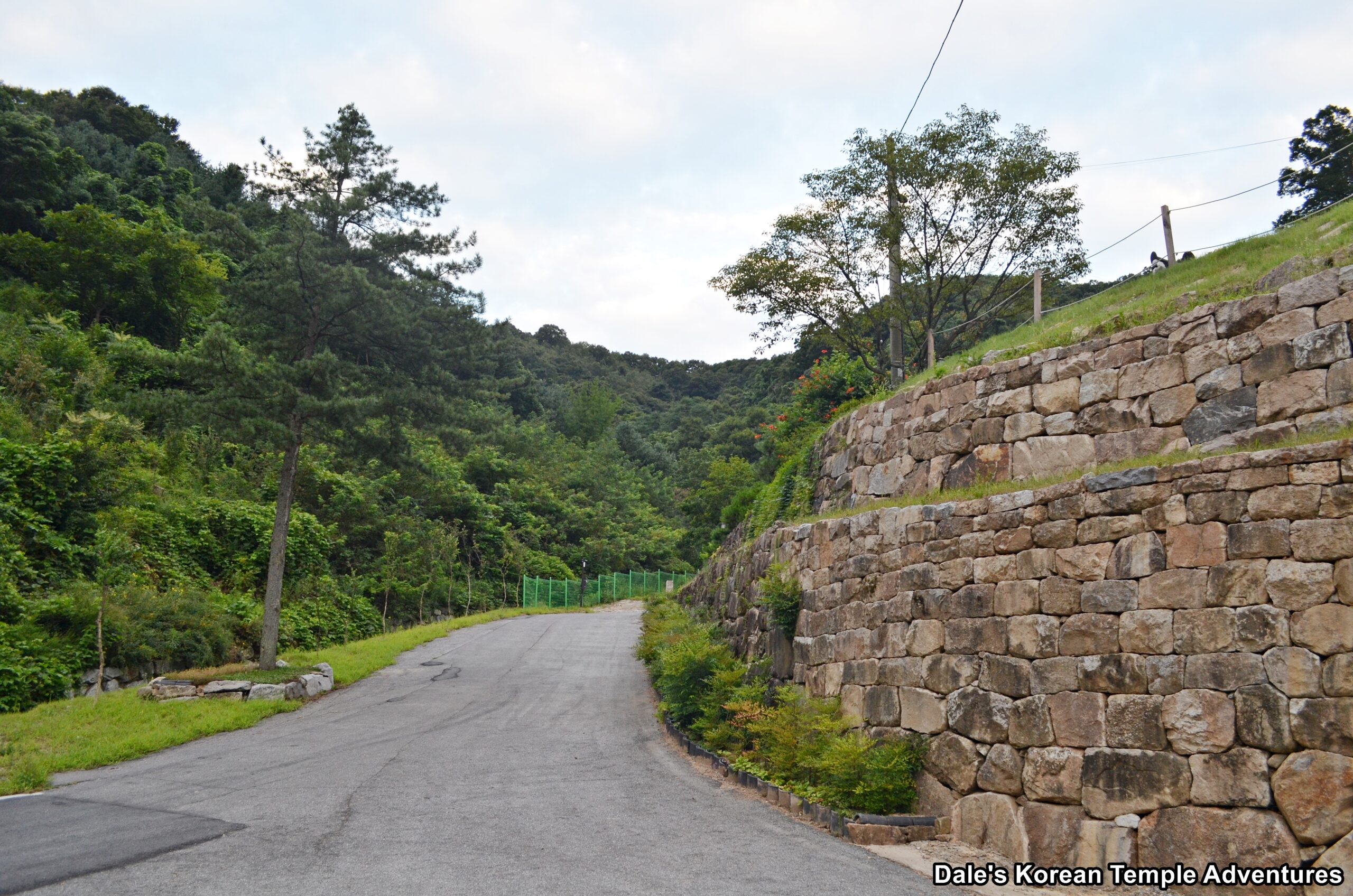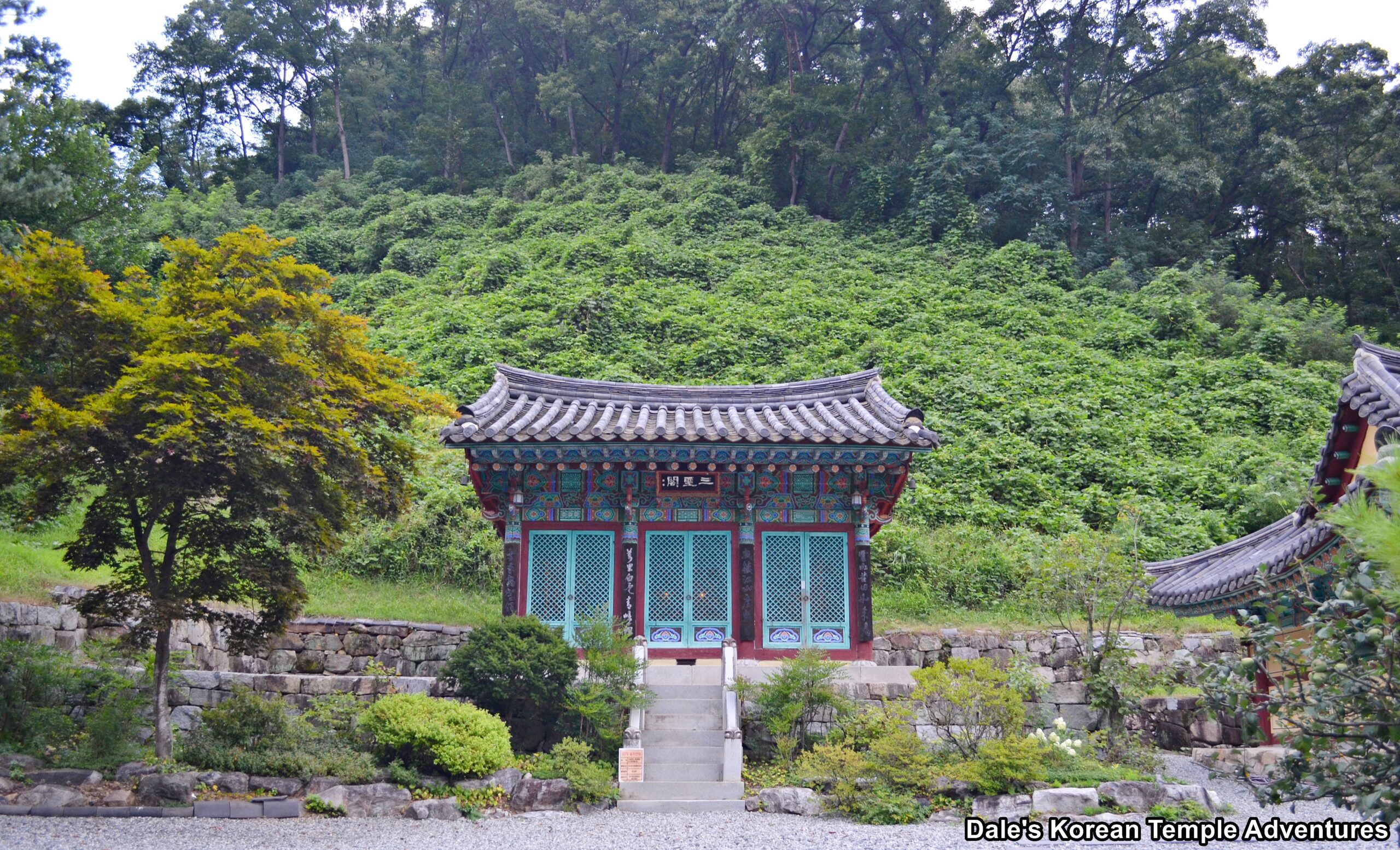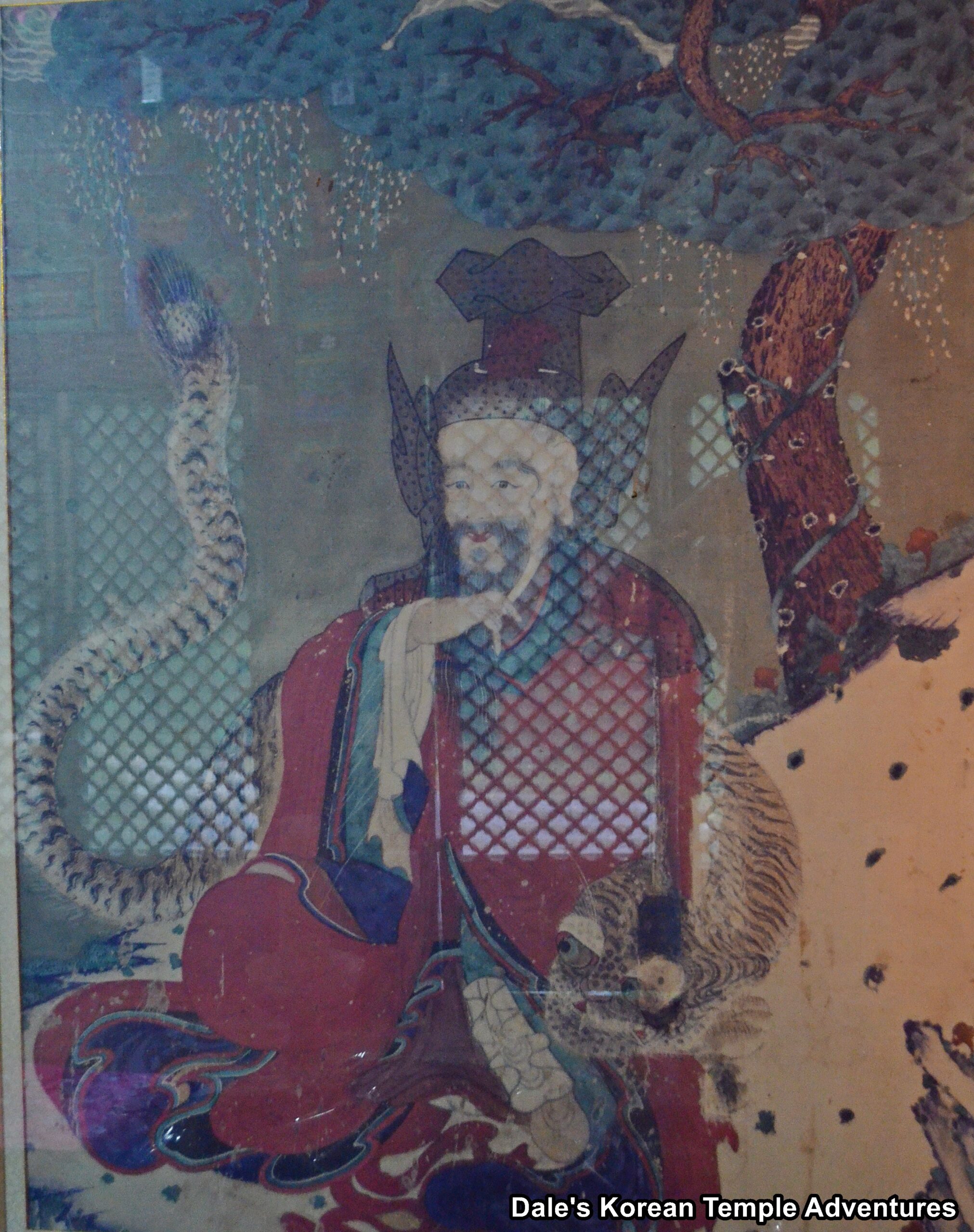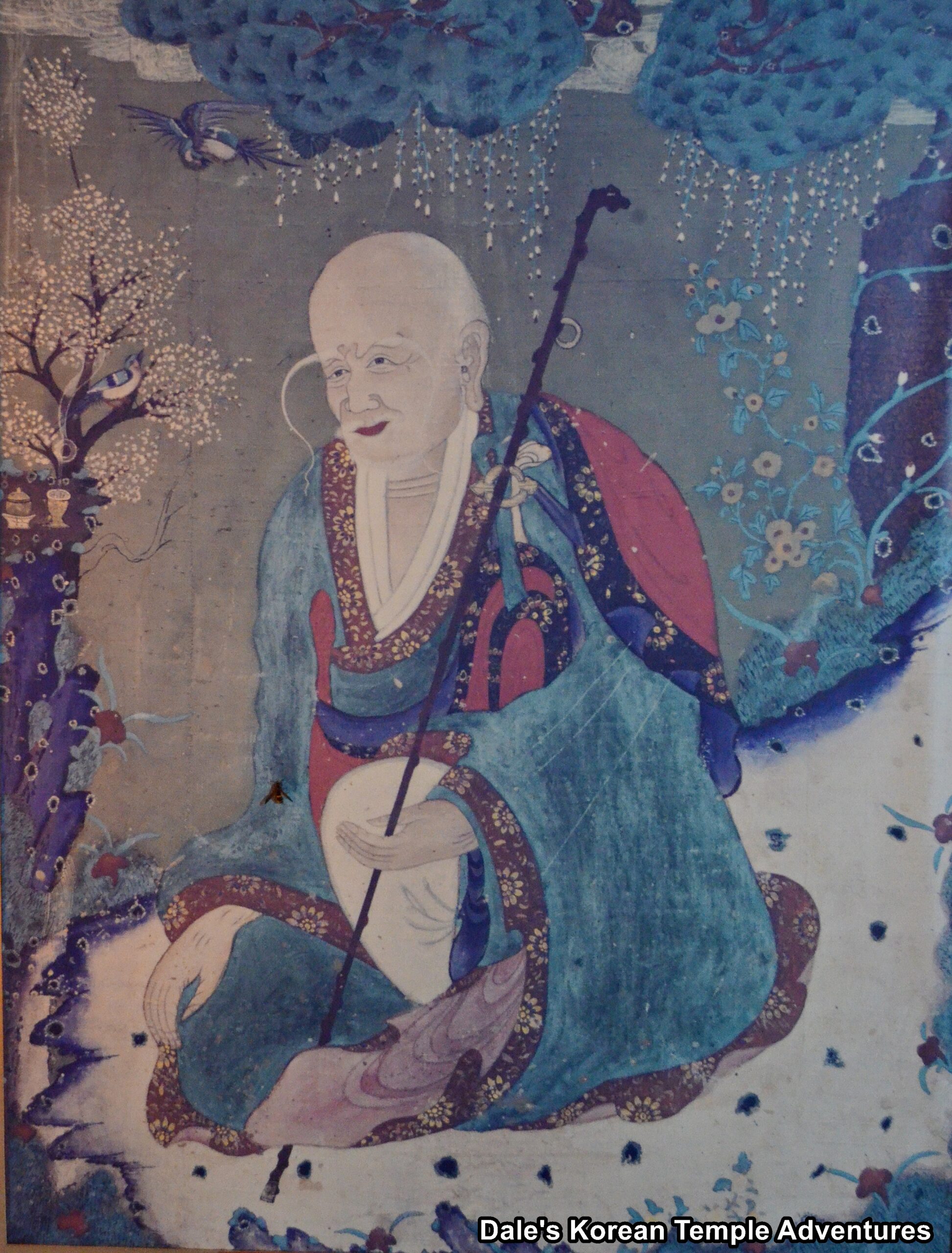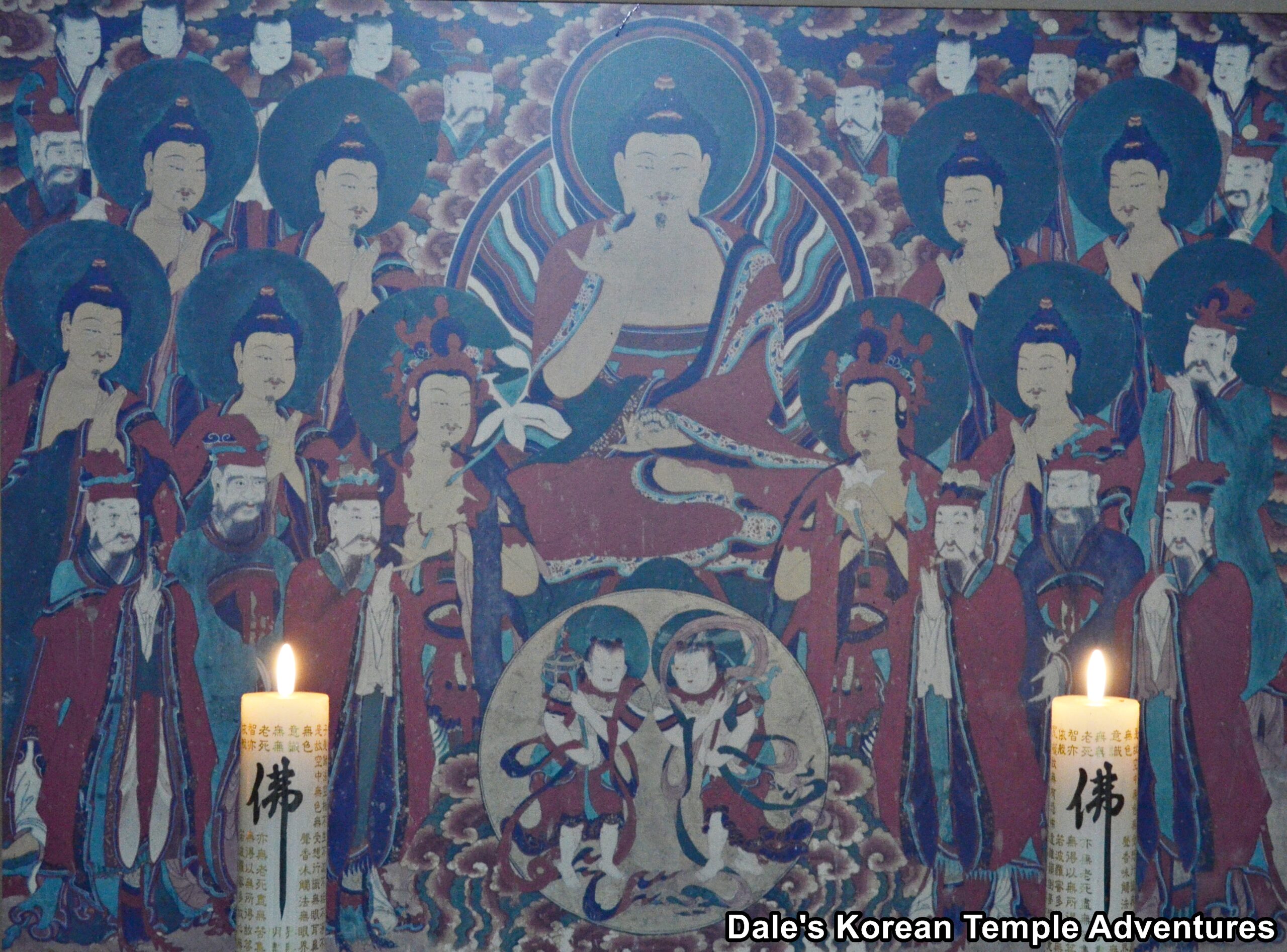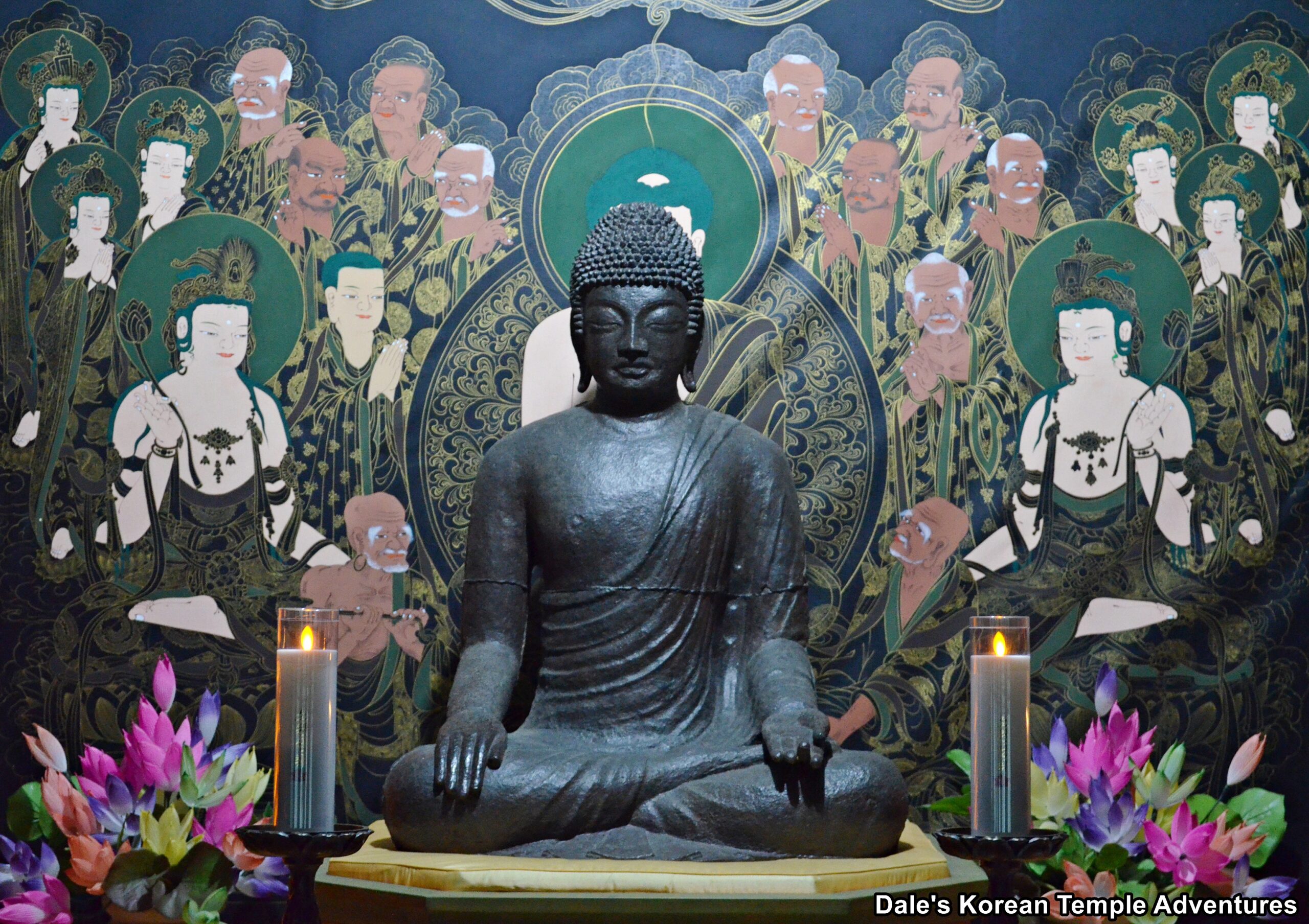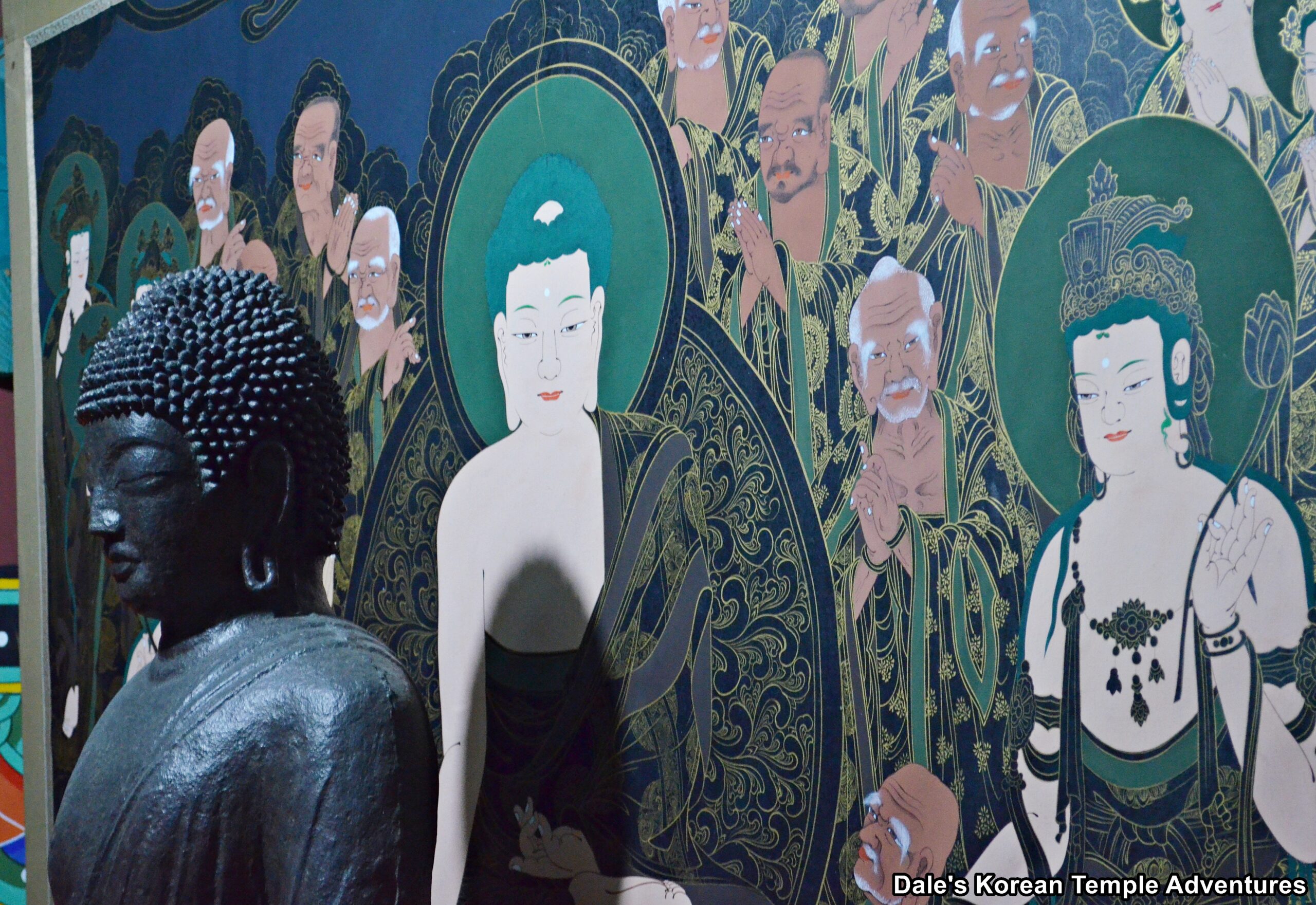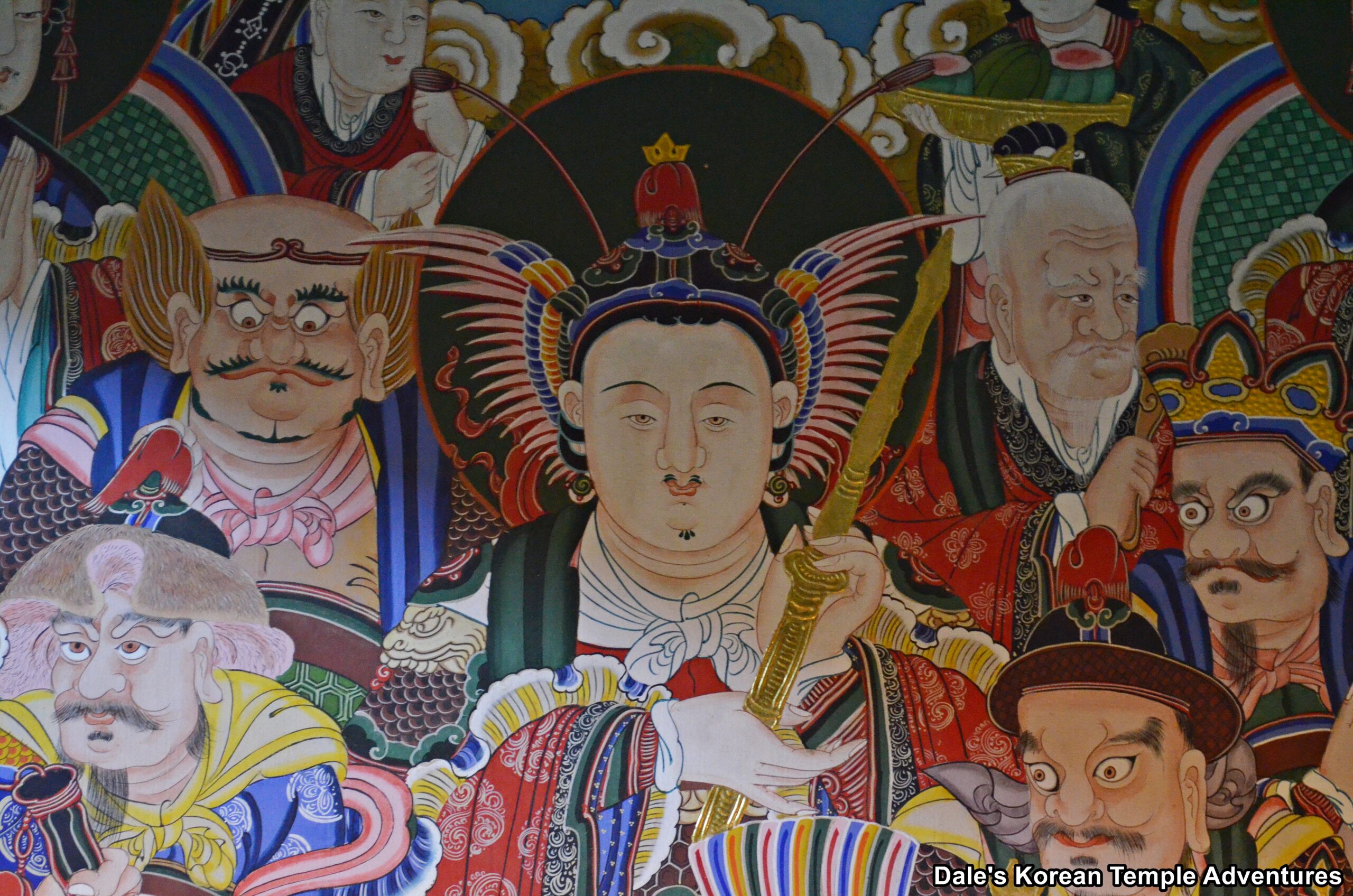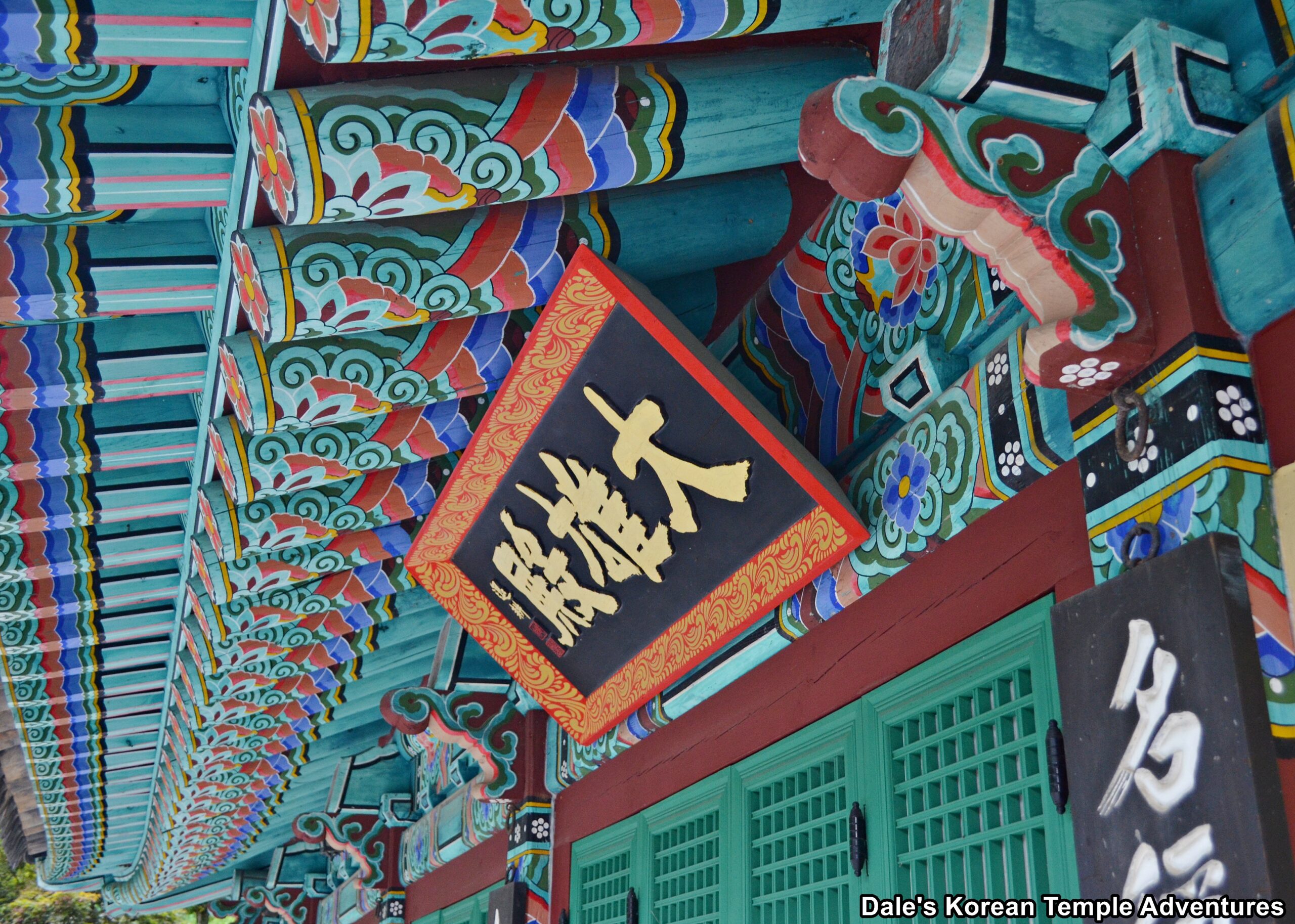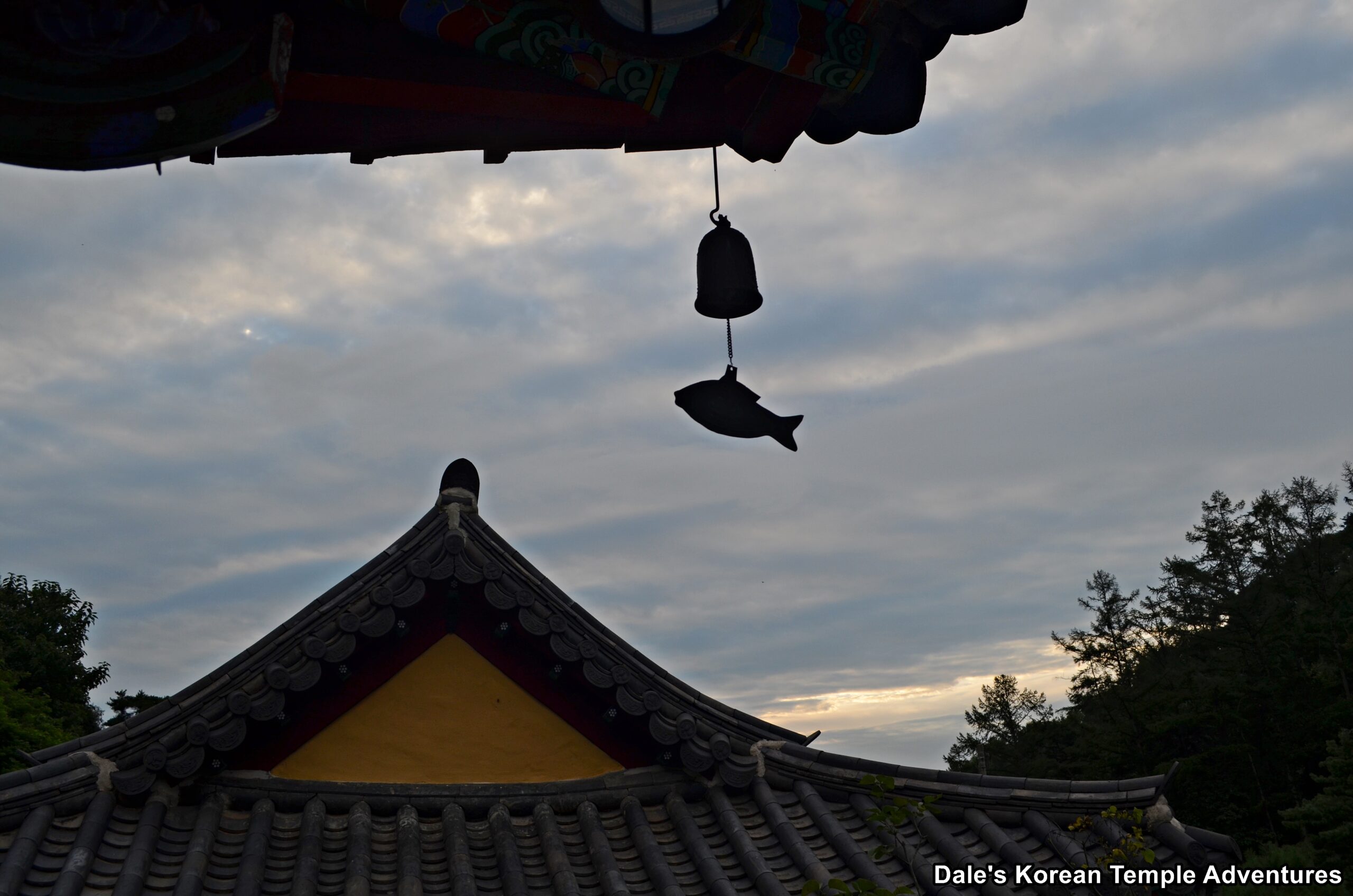Baekunam Hermitage – 백운암 (Chungju, Chungcheongbuk-do)
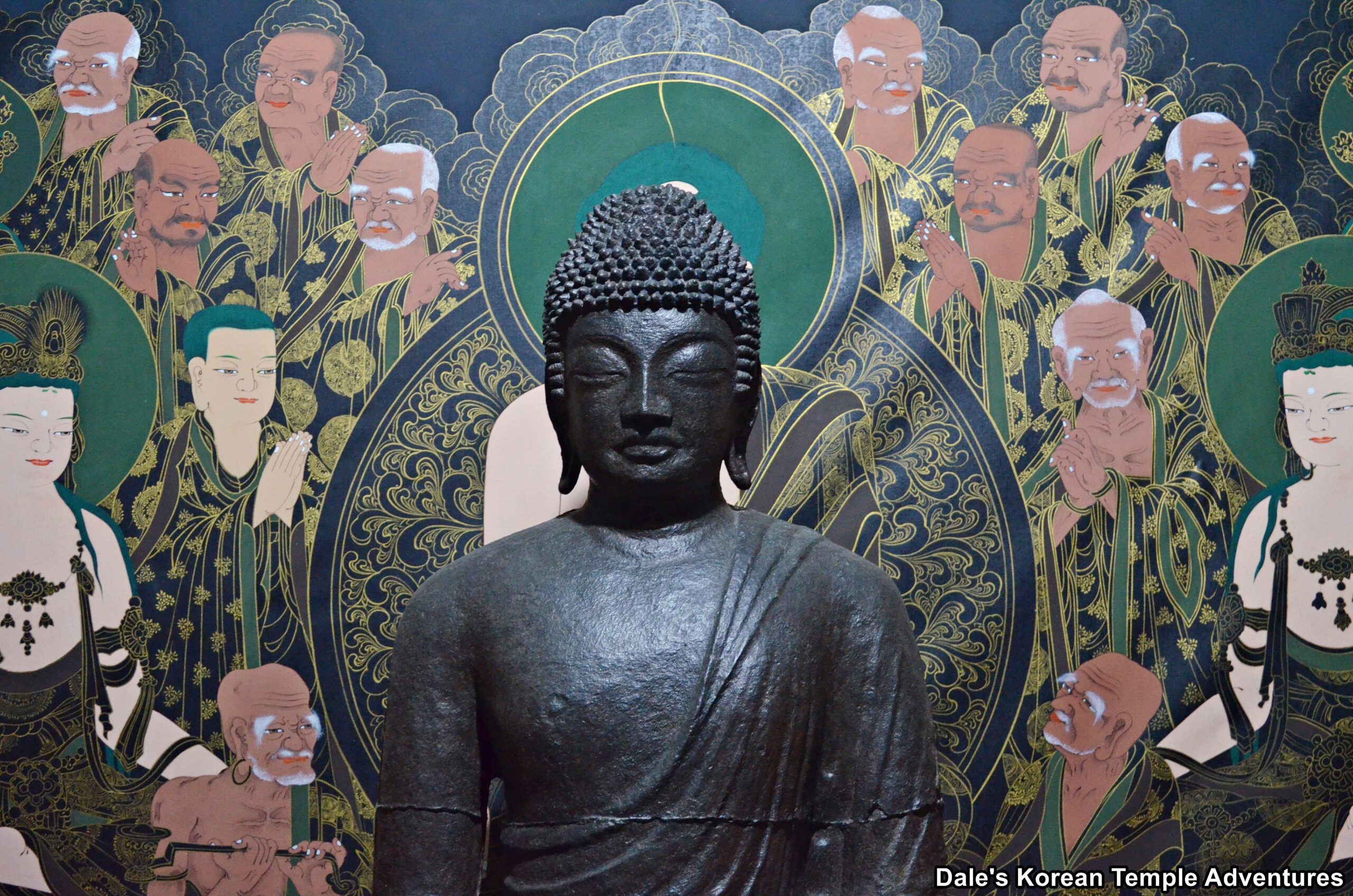
Hermitage History
Baekunam Hermitage, which means “White Cloud Hermitage” in English, is located in northern Chungju, Chungcheongbuk-do in the foothills of Mt. Bilmisan (352.2 m). In fact, the location of the hermitage is rather remote, and it’s situated with mountains to the west and agricultural fields to the east. It’s believed that Baekunam Hermitage was first founded in 1886 by a female shaman named Yun, who was also known as Lord of Jillyeong by the government of the Joseon Dynasty (1392-1910). In fact, Yun was known as a royal shaman.
There’s a rather interesting hermitage legend connecting shamans and the royal court. In 1882, Queen Min (1851-1895), who was also known as Empress Myeongseong, fled to Chungju during the Imo Incident (1882). The plight of Queen Min was perilous. She has just fled from the Royal Palace after rioters searched the royal grounds to kill her because of her membership in the much hated Min family; and as a result, of the perceived corruption of the government which was under Queen Min’s control. The rioters were poor and wanting revenge for the condition of their country and its people. The queen narrowly escaped the Royal Palace. Dressed as an ordinary lady of the court, Queen Min was carried on the back of a faithful guard who claimed that she was his sister. While in Chungju, a shaman predicted that Queen Min would return to the palace soon after taking flight from the Royal Palace and taking up residence at the home of Min Eung-sik. Eventually the queen would return to Seoul; but this time, with the shaman to serve her. In a dream, a white iron Buddha appeared to the shaman. In this dream, an iron Buddha asked the shaman to be enshrined in a temple, so a temple was built on the spot which is now Baekunam Hermitage. Baekunam Hermitage was built in 1886.
Much later, and after the hermitage was reconstructed in 1977, was the Yosachae (dorms) built. In 1991, the Samseong-gak Hall was built and the dorms were repaired. In 1991, the abbot of the hermitage, Jinsong, rebuilt the Daeung-jeon Hall. And in 2002, an access road was built to replace the formerly unpaved hermitage road.
Baekunam Hermitage is home to a single Korean Treasure. This treasure is Korean Treasure #1527, and it’s officially known as the “Iron Seated Buddha at Baegunam Hermitage.”
Hermitage Layout
You first approach the hermitage from the hermitage parking lot and around a bend in the road. The first of the two hermitage shrine halls that visitors can explore is the diminutive Samseong-gak Hall. The exterior walls to this shaman shrine hall are adorned in simple dancheong colours. Stepping inside the Samseong-gak Hall, you’ll find a collection of shaman murals that date back to 1888. The first of the three, and hanging on the far left side of the main altar, is the mural dedicated to Sanshin (The Mountain Spirit). The tiger in the Sanshin painting has a leopard-like face and a tiger body. It has a long tail that stands erect next to the Mountain Spirit’s head. And its green eyes look across Sanshin’s body protectively. Next to this mural is the older Chilseong (Seven Stars) mural. And hanging on the far right part of the main altar is a mural dedicated to Dokseong (The Lonely Saint). Birds fly overhead, flowers from the trees hang down, and Dokseong sits contemplatively with his long white eyebrows.
Next to the Samseong-gak Hall, and to the right, is the Daeung-jeon Hall. The Daeung-jeon Hall is both a storage area and the main hall at Baekunam Hermitage. The central part of the Daeung-jeon Hall is the shrine hall. Like the Samseong-gak Hall, the exterior to the Daeung-jeon Hall is plainly painted in traditional dancheong colours.
Stepping inside the main hall, your eyes will instantly be drawn to the main altar and the “Iron Seated Buddha at Baegunam Hermitage.” It’s believed that this statue, which looks to be Seokgamoni-bul (The Historical Buddha), was moved to its current location of Baekunam Hermitage from the ruins of the neighbouring the Eokjeongsa-ji Temple Site. The Eokjeongsa-ji Temple Site was a large temple that was first built during the Goryeo Dynasty (918-1392). The iron Buddha has a gentle face, and its robe hangs over just its left shoulder. The iron Buddha sits with its legs crossed and making the “Touching the Earth” mudra (ritualized hand gesture). The iron Buddha stands 87 cm in height, and it’s believed to date back to late Unified Silla (668-935 A.D.) to early Goryeo Dynasty (918-1392). Overall, the statue is quite well preserved with no major signs of damage. The “Iron Seated Buddha at Baegunam Hermitage” is the oldest of the three iron statues in Chungju alongside those at Daewonsa Temple and Danhosa Temple. The “Iron Seated Buddha at Baegunam Hermitage” is Korean Treasure #1527.
The only other building at the hermitage are the monks’s dorms and administrative office to the right of the Daeung-jeon Hall.
How To Get There
From the Chungju Intercity Bus Terminal, the easiest way to get to Baekunam Hermitage is to simply take a taxi. The taxi ride will last 25 minutes, or 19.1 km, and it’ll cost about 15,800 won (one way).
Overall Rating: 6/10
The obvious major highlight at Baekunam Hermitage is the “Iron Seated Buddha at Baegunam Hermitage.” The iron statue of the Buddha is a wonderful example of Buddhist artistry from late Unified Silla and/or the early Goryeo Dynasty. The statue is both masterful and sublime. In addition to this main hall statue, have a look inside the Samseong-gak Hall at the late 19th century shaman murals of Sanshin, Dokseong, and Chilseong. While harder to get to, Baekunam Hermitage is definitely worth it.
